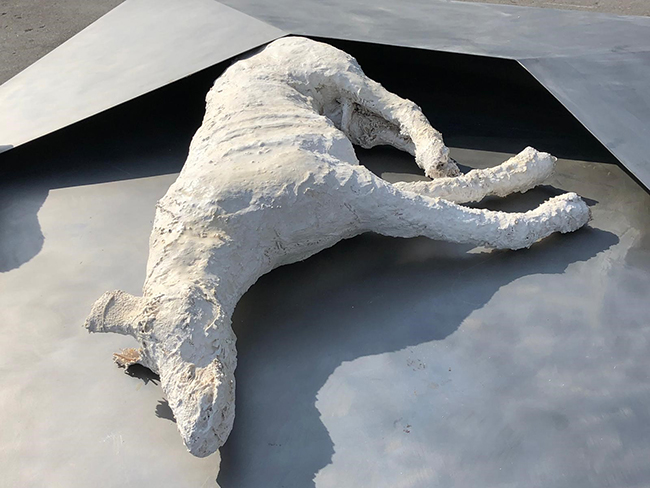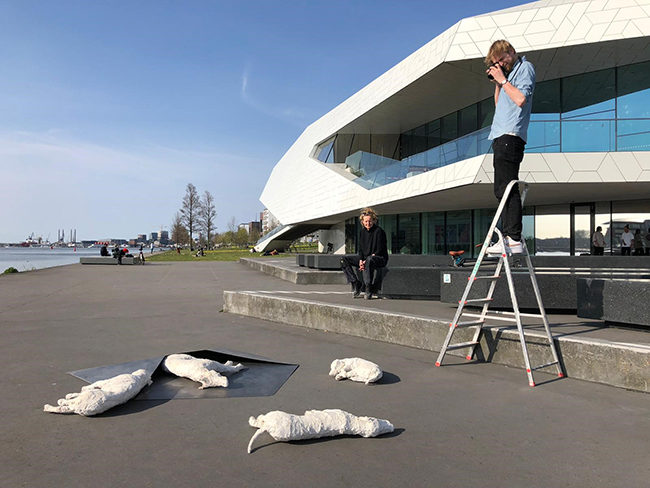In the world of contemporary art, Dutch sculptor Caroline Kampfraath occupies a unique niche. Her sculptures and installations are renowned not just for their aesthetic appeal but also for their engagement with materials and themes. Kampfraath holds a distinctive belief that each of her artworks demands its own unique material—a philosophy that elevates the complexity of her creations and pushes the boundaries of traditional sculptural expression.
Kampfraath’s art is characterized by its surreal ambiance, with each piece weaving together symbols that range from engorged veins and deceased canines to kidney-shaped dishes. These elements, though seemingly disparate, combine to create thematic narratives that challenge and mystify the observer. Her work demands deep engagement, often leaving the meaning veiled and open to interpretation.
The diversity of materials she employs is as eclectic as the subjects of her sculptures. From natural and artificial resins to clay, flax, wool, lead, plaster, glass, bronze, and stone, her choice of mediums creates a visual and textural tension that is central to the experience of her work. This juxtaposition of materials not only captivates but also enhances the thematic and emotional resonance of each piece.

One of Kampfraath’s works, titled “Dead Dogs Envelope,” exemplifies her approach. This piece, measuring approximately 300x300x40 cm, is crafted from aluminium and porcelain plaster. It serves as a poignant critique of modern communication, symbolizing how digital and instantaneous exchanges can suppress genuine emotional expression.

The artwork features a large metal envelope, within which are cast figures of dogs. The choice of dogs is symbolic — representing traits we often seek in human relationships such as loyalty, reliability, and comfort. Kampfraath suggests that these values are being overlooked in favor of more superficial electronic interactions. The metal, a cold and unyielding material, aptly represents the sterile and impersonal nature of emails and texts, contrasting sharply with the warmth and thoughtfulness of handwritten letters. In her narrative, the metal envelope can only deliver “dead dogs,” a metaphor for the lifeless and emotionless nature of our current digital communications.

Kampfraath’s work is laden with symbolism. The recurrent motifs, like the engorged veins and kidney-shaped dishes, are not random but are carefully chosen to evoke specific reactions and interpretations. These symbols often relate to bodily functions and conditions, hinting at deeper themes of life, death, and the human experience.
Her surreal approach draws the viewer into a world that is both familiar and alien. The puzzling atmosphere of her installations invites viewers to unravel the layered meanings, engaging with the art on a more profound level. This interaction is integral to Kampfraath’s artistic mission; she crafts her pieces to not only be seen but experienced and pondered upon.
The eclectic use of materials in Kampfraath’s works does more than just add visual interest. Each material is chosen for its ability to convey certain emotions or ideas. The hardness of bronze and stone may represent resilience or permanence, while the fragility of glass and plaster can suggest vulnerability and impermanence. This thoughtful selection and combination of materials challenge viewers’ perceptions and expectations, making the experience of her art both a visual and a conceptual journey.
Caroline Kampfraath’s contribution to the field of sculpture is significant not only for her unique material philosophy but also for her ability to infuse each piece with deep symbolic and emotional layers. Her works serve as a bridge between the visible and the invisible, the tangible and the intangible, coaxing the viewer into a deeper engagement with both the art and the wider world.
